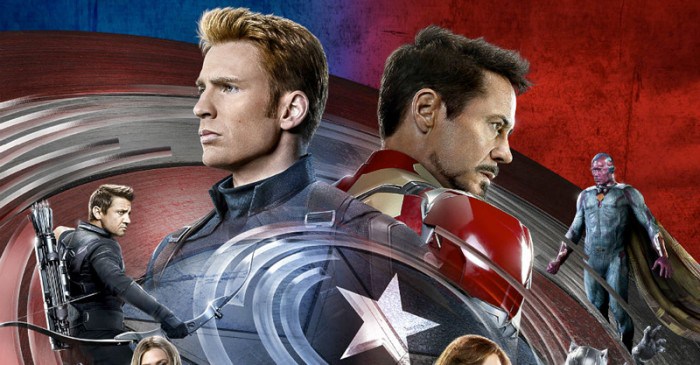
by Stone Marshall | May 1, 2016 | Awesome Book News |

Just to cover our bases, we want you to know there are spoilers for Captain America: Civil War credits scenes after the jump.
As any fan of Marvel Studios movies knows, it’s become customary for their comic book movies to have two credits scenes. One usually happens after a stylish end credits sequence, and another happens after all the rest of the credits have rolled. That hasn’t always been the case (Avengers: Age of Ultron and Incredible Hulk both lacked a second credits scene), but fans are certainly expecting it, and they usually don’t take any chances, sticking around until the credits are truly over.
In the case of Captain America: Civil War, critics and audiences lucky enough to catch advance screenings earlier this month have already seen one of the credits scenes, specifically the one that happens in the middle of the credits. Those screenings did not have a second sequence after the credits though. In the past, Marvel has held it back for the actual theatrical release of the movie. However, Captain America: Civil War is already playing overseas, and a second credits sequence is playing with those screenings, which means details have made their way online.
If you want to know about the second Captain America Civil War after credits scene, keep reading, but again beware ofspoilers.
Without diving into any specific details just yet, the mid-credits sequence that audiences in the United States have already seen involves Captain America (Chris Evans), The Winter Soldier (Sebastian Stan) and Black Panther (Chadwick Boseman). It’s more of a tease of the forthcoming solo Black Panther movie than anything, but it’s also a scene that raises some questions about the future of Bucky in the Marvel cinematic universe. We’ll talk more about that scene after general audiences start seeing Captain America: Civil War next week.
As for the second credits scene that international audiences are seeing, Birth.Death.Movies has learned that it gives us a little more Spider-Man. It’s a quick scene that has Peter Parker (Tom Holland) messing with the new suit that was designed by Tony Stark (Robert Downey Jr.). It’s the same suit that you’ve seen in the trailer already, and it’s much more high-tech than the suit he was swinging around in previously (you get a glimpse of that in the movie too). The scene offers a little more close-up look at the suit this time, specifically a digital readout on his web shooters, hinting at a much more high-tech webslinger coming in his first solo movie in the Marvel cinematic universe. And in case there’s any doubt of that, we get the text that says “Spider-Man will return” to confirm what we already know.
That doesn’t sound like anything groundbreaking, but once you see how cool Spider-Man is in Civil War, you’ll be glad to spend just a little more time with him. But keep in mind that there’s a chance these won’t be the only two credits scenes we’ll see. After all, when The Avengers played overseas before it hit the US, international screenings didn’t get the shawarma scene at the end.
Don’t forget that Anthony & Joe Russo previously said there could be as many as three credits scenes this time, so maybe they’re holding something else back to surprise us. It could be a tease for Doctor Strange, Guardians of the Galaxy Vol. 2, Thor: Ragnarok, Captain Marvel or even Avengers: Infinity War. Stay tuned to see if there are more Captain America Civil War credits scenes in our future.
Spoilers: What’s in the ‘Captain America: Civil War’ After Credits Scene?
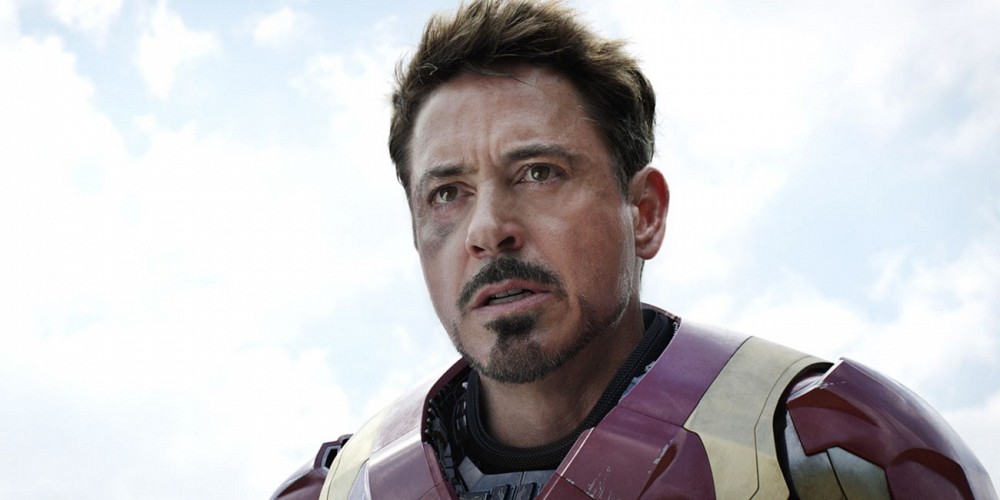
by Stone Marshall | Apr 30, 2016 | Awesome Book News |
Minor spoilers for Captain America: Civil War ahead
The recent trailer for Doctor Strange notwithstanding, Marvel Studios seems to be planning to make a move away from superhero origin story movies by introducing characters in team-up films before audiences meet them in standalone features. In Captain America: Civil War, for example, the established team of Avengers are joined by newcomers Black Panther (Chadwick Boseman) and Spider-Man (Tom Holland) as the teams face off against one another in a superhero-on-superhero brawl.
Unlike the Avengers’ battles against the Chitauri or Ultron, however, this fight has the added complication of friendship; these superheroes don’t really want to hurt each other, after all, so Tony Stark (Robert Downey Jr.) can’t just order Vision (Paul Bettany) to blast Captain America (Chris Evans) and his fellow dissidents to pieces.
Tony’s need to pull his punches a little is ultimately what leads him to seek out one of the most powerful superheroes in the Marvel Cinematic Universe, according to co-director Joe Russo. Speaking at the UK press conference for Captain America: Civil War, Russo explained why Iron Man feels driven to seek out Spider-Man and his particular skills to help in the fight against Captain America’s team.
“Look, there’s a certain narcissism to the character and Tony doesn’t want to lose this fight, and at the same time I think he also sees Spider-Man as the greatest living non-lethal weapon. If you’re going out to capture a bunch of people who you don’t necessarily want to hurt, you couldn’t ask for a better character than Spider-Man to take with you.
“He does show up and illustrate that Spider-Man, he knows how powerful he is. In a video we see Spider-Man stopping a car moving 40 miles an hour, where he catches it and puts it back on the ground, so I think he believes that he’s taking with him perhaps one of the most powerful characters in the Marvel universe, and I think he feels like the kid will be well-protected under his tutelage. You also find out in that sequence, when things go wrong the kid says, ‘What do I do?’ and Tony says, ‘Keep your distance, web ’em up.’ So he’s obviously mentored the kid for what’s about to go down.”
“It’s still very irresponsible,” joked fellow director Anthony Russo.

The beginning of the mentor-protegé relationship between Iron Man and Spider-Man in Captain America: Civil War is all the more important now that we know Downey will be starring in Spider-Man: Homecoming, the first solo outing for Holland’s version of the character. From Spider-Man’s first reveal in one of the trailers for Civil War, it was clear that Iron Man offers a bit of a helping hand when it comes to designing Spider-Man’s costume, and it wouldn’t be surprising if the science-loving Peter Parker comes to regard Tony Stark as a bit of a father figure.
One interesting aspect of Holland’s Spider-Man is that he’s the youngest version of Peter Parker so far – not only in terms of the actor’s age, but also because Marvel seems very interested in having a kid superhero in the MCU. Both previous big screen Spider-Man incarnations have started out as high schoolers, but were on the tail end of their school careers when audiences met them. In the case of Holland’s Spider-Man, Marvel may intend to keep him in school for a while. Let’s hope his superhero exploits leave time for homework.
Captain America: Civil War opens in theaters May 6, 2016, followed by Doctor Strange – November 4, 2016; Guardians of the Galaxy Vol. 2 – May 5, 2017; Spider-Man: Homecoming – July 7, 2017; Thor: Ragnarok – November 3, 2017; Black Panther – February 16, 2018; Avengers: Infinity War Part 1 – May 4, 2018; Ant-Man and the Wasp – July 6, 2018; Captain Marvel – March 8, 2019; Avengers: Infinity War Part 2 – May 3, 2019; and as-yet untitled Marvel movies on July 12, 2019, and on May 1, July 10, and November 6 in 2020.
Captain America: Civil War Director Explains Why Iron Man Recruits Spider-Man
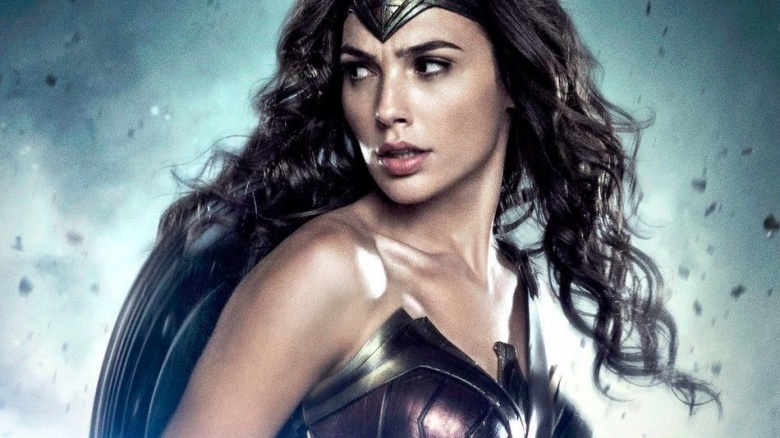
by Stone Marshall | Apr 30, 2016 | Awesome Book News |
Though 2016 is shaping up to be an epic year for movies, it almost feels like a warm-up when you look at the long list of blockbuster films already on the release calendar for 2017. Even though next year still feels far away, it’s never too early to get excited about taking a trip to the theater, so we’ve lined up 19 of the biggest upcoming releases—and whether you’re into action, comedy, horror, or drama, there’s something here for everyone…
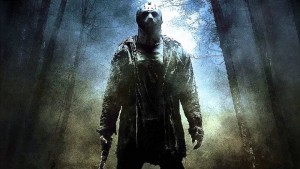
Friday the 13th Reboot – January 13
Pity today’s young film fans, for they’ve never experienced the cheesy joy that was being treated to regular installments of Friday the 13th throughout the ’80s. Between 1980 and 1989, the hockey-masked slasher Jason Voorhees hacked his way through scores of screaming nubile victims in eight films—although by the end of the decade, the franchise had started to teeter between stale and ridiculous, and subsequent attempts to extend or reboot the character’s mythology have failed to draw much of a following. This latest overhaul arrives nearly a decade after the last reboot, which grossed nearly $100 million. Although little is known about the plot, we’re pretty sure it has to do with a guy in a hockey mask chopping sexed-up teens to bits.
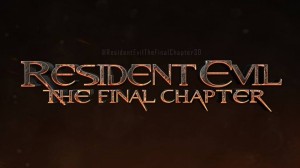
Resident Evil: The Final Chapter – January 27
Five years after Resident Evil: Retribution, Milla Jovovich returns to close out the sci-fi horror franchise she’s led for more than a decade—and nearly $1 billion in worldwide grosses. Despite the long lapse between sequels, this sixth installment will reportedly pick up right where Retribution left off while following director Paul W.S. Anderson’s mandate to come full circle with the saga of a dystopian future in which a corporate-created virus has unleashed a zombie plague. In other words, if you haven’t been watching so far, this isn’t the best place to come in—but if the Umbrella Corporation, Raccoon City, and “t-virus” are meaningful phrases for you, then you may want to mark your calendar.

Lego Batman – February 10
Not long ago, the idea of a movie “based on” Legos seemed too silly for words, but then The Lego Movie racked up nearly $470 million while making us all root for plastic bricks (and play “Everything Is Awesome” on endless repeat). Taking the hint, Warner Bros. is diving right in with a universe of Lego-derived films, starting with this spin-off, which brings back Will Arnett as Gotham’s Caped Crusader. He’s joined by an intriguing cast that includes his Arrested Development castmate Michael Cera as Robin, Zach Galifianakis as the Joker, and Mariah Carey as the mayor—and with Lego Movie animation co-director Chris McKay on board to helm the film from a script by Abraham Lincoln: Vampire Hunter director Seth Grahame-Smith, we’re sure plenty of inspired silliness awaits.
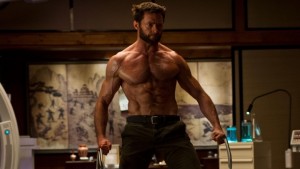
Untitled Wolverine Sequel – March 3
Hugh Jackman has played Wolverine for so long that it’s nearly impossible to imagine anyone else in the role of the adamantium-clawed X-Men mutant. Soon, Fox will need to figure out who’ll be the next actor to play the part, but first, Jackman’s getting his swan song with a third standalone Wolverine feature. At this point, the film’s plot is purely a matter of speculation—most of which involves the notion that we could be in for an adaptation of Marvel’s Old Man Logan comic, about an alternate-future version of the (nearly) ageless hero. But in a recent interview, Jackman suggested Wolverine 3 could also bring about the return of Patrick Stewart’s Professor X, adding yet another layer of closure for longtime fans of the franchise.
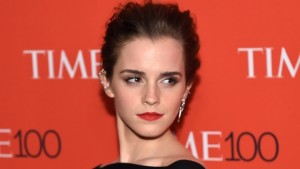
Beauty and the Beast – March 17
Disney’s campaign to turn each of their animated classics into live-action blockbusters continues with Beauty and the Beast, which offers a new perspective on their 1991 hit. Like Disney’s earlier Beauty, this version draws inspiration from the classic fairy tale about a prince (played here by Dan Stevens) who’s cursed with a grotesque appearance, yet finds love with a pure-hearted maiden (Emma Watson) imprisoned in his castle after her father (Kevin Kline) offers her up in a deal to spare his own life. Like a lot of stories from the era, it’s rather dark, but Disney’s animated adaptation put a family-friendly spin on it with music and humor, and we can expect the same here—plus a cast that includes Ewan McGregor and Sir Ian McKellen.
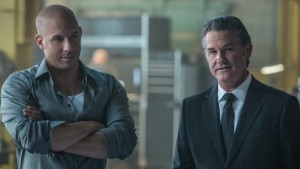
Furious 8 – April 14
The fate of the Furious franchise seemed a bit uncertain in the wake of star Paul Walker’s sudden passing in 2013, which complicated production of 2015’s Furious 7 and put the burden of additional expectations on his longtime co-star and friend, Vin Diesel. But with nearly $4 billion in worldwide grosses, Universal wasn’t about to garage its gearhead soap opera, so like clockwork, the gang will return for an eighth installment—and one that’s already being set up as a callback to previous chapters as well as a springboard into a new trilogy that will reportedly see stories pivot away from the heist capers of recent sequels and into a spy saga spearheaded by Kurt Russell’s Frank Petty character.
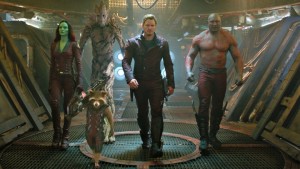
Guardians of the Galaxy Vol. 2 – May 5
Initially, it seemed like a hilariously dumb idea for Marvel to turn a relatively obscure comic about a ragtag team of intergalactic do-gooders—whose ranks include a raccoon-like creature and an alien resembling a sentient tree—into a $200 million movie. Nearly $775 million in box office receipts later, Guardians of the Galaxy could be the start of an Avengers-style franchise for the studio, and Chris Pratt, whose biggest credit prior to taking on the role of Peter “Star-Lord” Quill came as doughy doofus Andy Dwyer in NBC’s Parks & Recreation, is a full-on action hero. The gang’s all back for Vol. 2, along with writer-director James Gunn, and while we don’t have any idea what they’ll be up to this time around, we’re confident it’ll be tons of fun.

Pirates of the Caribbean: Dead Men Tell No Tales – May 26
Pre-production on this fifth installment in the Pirates of the Caribbean saga started back when the previous sequel, 2011’s On Stranger Tides, was on its way to theaters, and its path through development has been strewn with script difficulties and budget-induced delays. Still, any new chapter in a franchise that’s grossed nearly $4 billion counts as a promising development for the studio, and Disney has stood by while producer Jerry Bruckheimer steered Pirates of the Caribbean: Dead Men Tell No Tales to its destination. Directed by Joachim Rønning and Espen Sandberg (Kon-Tiki), this adventure sees Johnny Depp’s Captain Jack Sparrow face off against an old nemesis played by Javier Bardem—and sees the return of Orlando Bloom’s Will Turner in his new guise as Davy Jones.
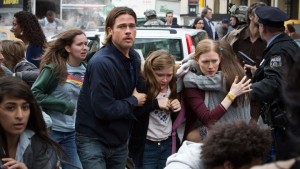
World War Z 2 – June 9
For a movie that tried to spin an action-thriller yarn out of a bestseller that used the oral history format to tell the story of a worldwide zombie outbreak—and had an infamously troubled production in the bargain—World War Z turned out to be a surprisingly entertaining (not to mention extremely commercially successful) film. Which brings us to the inevitable sequel, World War Z 2, in which Brad Pitt returns to battle the zombie plague. We don’t know much about the plot at this point, but director Juan Antonio Bayona (The Orphanage, The Impossible) will be working from a screenplay by Steven Knight, whose varied list of credits includes the chess drama Pawn Sacrifice and Bradley Cooper’s Burnt.
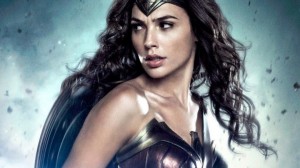
Wonder Woman – June 23
After being introduced to audiences in Batman v Superman: Dawn of Justice, Gal Gadot’s Wonder Woman will get her own standalone feature, which is rumored to be the first installment in a period-piece trilogy that will take audiences from the 1920s to the present day. Monster director Patty Jenkins is at the helm, with a screenplay from Pan writer Jason Fuchs. Meanwhile, Gadot will be surrounded by a supporting cast that includes Chris Pine, Robin Wright, and Danny Huston. Whatever actually happens in the movie, it’s a long-overdue victory for comics fans who’ve waited years for the Amazonian warrior to get a shot at her own big-screen franchise—and it may help Warner Bros. gain a demographic edge on Marvel in the superhero blockbuster arms race.
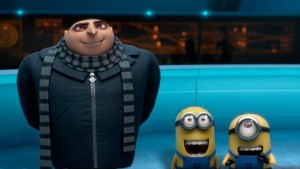
Despicable Me 3 – June 30
From its humble beginnings as a cartoon about a funny-looking supervillain who sets out to steal the moon and ends up adopting three adorable munchkins, Despicable Me has grown into an impressively adaptable franchise for Universal. In addition to 2013’s Despicable Me 2, it’s also spun off a prequel (2015’s Minions), six short films, three video games, and a theme park attraction—and as we can see from the 2017 release schedule, it isn’t done yet. Details are still very sketchy regarding this third installment, but we can safely assume Steve Carell will be back as the nefarious (but kinda cuddly) Gru—and we know he’ll be working from a script written by Cinco Paul and Ken Daurio, who collaborated on the first two films.
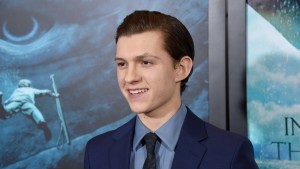
Untitled Spider-Man Reboot – July 7
Sony’s hopes for a Spider-Man film universe were dealt an embarrassing setback after director Marc Webb’s reboots underperformed. But even if we aren’t getting a Sinister Six or Venom movie anytime soon, the core franchise remains a top priority at the studio—as evidenced by this new reboot, which will find Tom Holland starring as the web-slinger in a standalone film while doing double duty as a supporting player in a number of Marvel movies (starting with Captain America: Civil War). The studios are keeping the details of Spidey’s next adventure as hush-hush as possible, but they’ve made an intriguing choice for director: Jon Watts, who helmed the creepy low-budget Kevin Bacon thriller Cop Car.
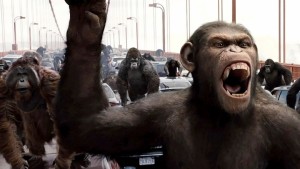
War for the Planet of the Apes – July 14
Dawn of the Planet of the Apes director Matt Reeves returns for this follow-up, which picks up from Dawn’s final scene—a grim foreshadowing of the major conflict brewing between genetically enhanced primates and a human population decimated by a virus dubbed the Simian Flu. Andy Serkis is back as the apes’ leader, Caesar, whose journey from young chimp to noble warrior has formed the backbone for the franchise’s overall arc. He’s joined by Steve Zahn (as a new ape) and Woody Harrelson (as a character known as the Colonel, reportedly the film’s chief antagonist). Reeves, who co-wrote the script, is keeping storyline details under wraps, but says the events depicted in War for the Planet of the Apes see Caesar achieving “mythic” status.
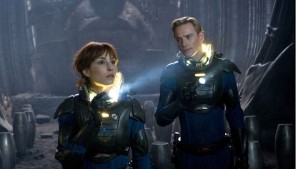
Alien: Covenant – October 6
With 2012’s Prometheus, Ridley Scott made his eagerly awaited return to the Alien franchise by way of a prequel that hinted at the long-ago beginnings of his blockbuster saga’s story. Under the weight of decades’ worth of sequels, spinoffs, and expectations, the end result couldn’t help but disappoint some viewers, and in spite of a $400 million gross and largely positive reviews, there’s a sense of unfinished business hanging over the sequel. Fans who feel Prometheus didn’t tie into the Alien films strongly enough might be better served by Alien: Covenant, which brings back Michael Fassbender and Noomi Rapace to show what happens after they hijack an ancient spacecraft in order to venture to the homeworld of the mysterious Engineers and halt their plans for humanity.
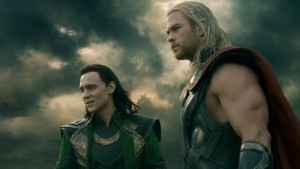
Thor: Ragnarok – November 3
In Norse mythology, Ragnarök is an apocalyptic series of events that results in the world being plunged into water after the deaths of several gods—including Odin, Thor, and Loki—and culminates in a planetary rebirth. Needless to say, it’s obvious from the title that Thor: Ragnarok won’t be a jolly good time for our hammer-wielding hero (Chris Hemsworth), although we can guess from his imminent participation in the upcoming Avengers: Infinity War movies that he’ll emerge relatively unscathed after the final act. Whatever happens here, he’ll be joined by Mark Ruffalo, reprising his Marvel Universe role as Bruce Banner/the Hulk, and working under the direction of New Zealand filmmaker Taika Waititi, who earned raves for his 2014 vampire mockumentary What We Do in the Shadows.
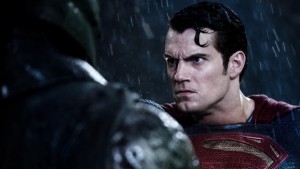
Justice League: Part 1 – November 17
Marvel has done a brilliant job of laying out the template for a successful shared universe, and now Warner Bros. is following in its rival’s footsteps with its DC Comics properties, which are due to get their first moments in the all-star superhero team spotlight with Justice League: Part 1. Director Zack Snyder has already agreed to helm, and confirmed members of the cast include stars from the studio’s pre-existing franchises, including Henry Cavill, Gal Gadot, and Ben Affleck, as Superman, Wonder Woman, and Batman, respectively. While we don’t yet have any idea what danger our team will face, we do know it’ll be serious enough to attract the attention of Aquaman (Jason Momoa) and Cyborg (Ray Fisher). And with a sequel already scheduled for 2019, you can bet the battle won’t end here.
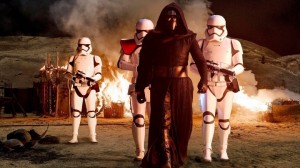
Star Wars: Episode VIII – December 15
This is Star Wars we’re talking about, so the list of things we truly know about Episode VIII is awfully short. But we do know a couple of important facts: one, Rian Johnson (Looper) will be in the director’s chair; and two, most of Episode VII’s cast will be back, including Daisy Ridley, John Boyega, Oscar Isaac, and Adam Driver, along with OG franchise stars Mark Hamill and Carrie Fisher. Beyond that, pretty much all we can tell you is that this installment follows the events of Episode VII, and advances the new trilogy pitting the Resistance against the First Order led by Supreme Leader Snoke (Andy Serkis) and his apprentice Kylo Ren (Adam Driver). Oh, and another thing: it’ll sell tons of tickets.
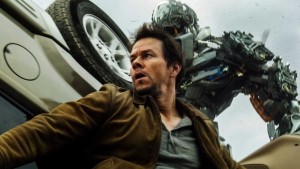
Transformers 5 – TBD
Every time Michael Bay thinks he’s out of the Transformers franchise, they pull him back in with a fresh boatload of cash. Bay’s been making noises about being done with Optimus Prime and his buddies for years, and was initially only on board to produce this installment in the series. But the executives at Paramount must have been pretty persuasive, because he’s still in the director’s seat for what he insists will be his final Transformers film. Aside from Mark Wahlberg being back as the saga’s current human star, we don’t know what to expect from Transformers 5, although we’re sure there will be plenty of action, and lots of lead-ins to the assortment of spin-off films the studio’s planning.
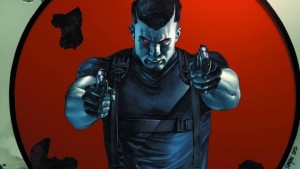
Bloodshot – TBD
We’re still not sure whether audiences will be willing to shell out for a full slate of Marvel and DC movies, but Sony’s already looking to add another player to the game. Valiant Entertainment, the publisher behind the comics Bloodshot and Harbinger, has signed a deal to adapt both titles to the big screen, with plans to bring them both together in a shared-universe crossover picture titled Harbinger Wars. First, though, we get Bloodshot, in which John Wick directors David Leitch and Chad Stahelski bring to life the saga of a dead mobster brought back from the grave and given superpowers. This is clearly not going to be the most kid-friendly comic movie on the block, which might actually give it an edge with audiences.
Top Movies of 2017

by Stone Marshall | Apr 29, 2016 | Minecraft News |
Welcome to the Minecraft Metaverse!
We’re excited to announce that Minecraft: Gear VR Edition is here. You can get it on the Oculus Store starting today for $6.99.

We worked closely with the Minecraft team to let you step inside your Minecraft world with friends. Now you can build, explore, battle mobs – and all your other favorite Minecraftactivities – with the power of mobile virtual reality.
John Carmack shared his thoughts about why this is an exciting moment for mobile VR:
“Minecraft is a game that you can both figuratively and literally lose yourself in. In fact, my strongest memories of being inside VR are from the time I’ve spent exploring Minecraft on Gear VR. Experiencing it in virtual reality changes it from an abstract activity to a visceral one – it goes from a sense of playing the game to one of being inside your world, and spinning around to find a creeper sneaking up on you leaves a powerful impression. Infinite worlds have been explored, shaped, and shared by millions of people, and now in VR; that sounds a bit like the fabled Metaverse.”

Welcome to the Minecraft Metaverse.
Minecraft: Gear VR Edition supports all the features of Pocket Edition, including Creative and Survival modes, skins, and multiplayer. You can choose between the more comfortable default theater view or the more intense and immersive first-person view that lets you stand beside your creations.

The mobile freedom of Gear VR gives you the opportunity to examine what you’ve built inMinecraft as you would in the real world. You’ll need a gamepad (sold separately) to move through and interact with Minecraft, and we recommend the SteelSeries Stratus XL.
Go forth and explore your favorite creations in Gear VR from every vantage point possible. See you in Minecraft!
– The Oculus Team
Minecraft Now Available on Oculus for Gear VR
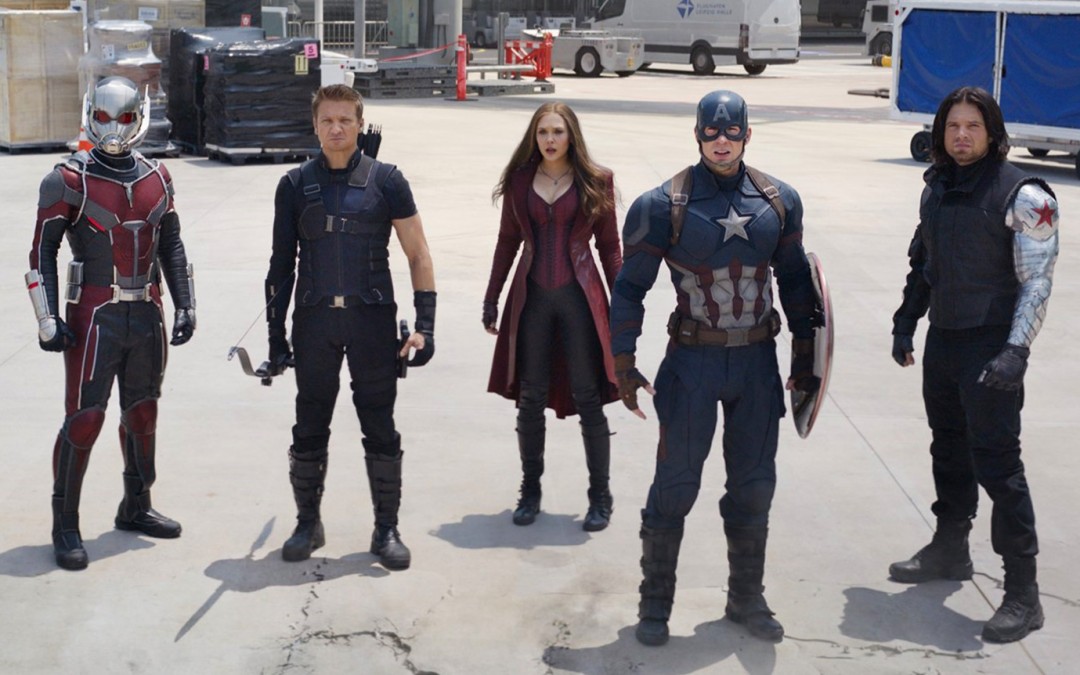
by Stone Marshall | Apr 29, 2016 | Awesome Book News, Minecraft News |
The Marvel Cinematic Universe doesn’t get much better than this — and that’s a big problem.
“Captain America: Civil War” isn’t necessarily the best Marvel movie — directing duo Joe and Anthony Russo fail to deliver even a fraction of the scale, grace, and ineffable sense of joy that Joss Whedon brought to “The Avengers” — but it’s nevertheless the Platonic ideal of a Marvel movie.
More so than any of the previous episodes in the Marvel Cinematic Universe, “Civil War” is a soap opera in spandex. In part, that’s because of the film’s refreshing (if not fully realized) emphasis on emotional turmoil rather than global destruction; while plenty of buildings blow up, most of the collateral damage is caused by the good guys as they argue with each other and threaten to go their separate ways. This isn’t just about killing time before the Infinity Wars, it’s about fulfilling the ultimate goal of the MCU: A film franchise so immense and self-perpetuating that a plot’s greatest possible conflict is no longer the end of the world, but rather the end of the brand.
The story begins, as most Marvel movies do, wherever the hell it wants. The profound sense of guilt that began to fester inside Tony Stark (still Robert Downey, Jr.) after the attacks on New York City has been intensified by the death toll from the fight against Ultron in Sokovia. And Stark isn’t the only one who’s afraid to look in the mirror. Early in the film, Scarlet Witch (Elizabeth Olsen) is devastated when a brawl in Lagos claims a handful of innocent bystanders. With various world governments on edge about the continued existence of the Avengers — whose formation seems to have invited a never-ending series of calamities upon the Earth — U.S. Secretary of State Thaddeus “Thunderbolt” Ross (William Hurt) draws up the Sokovia Accords, which would essentially put the superhero task force under the command of the United Nations.
“Civil War” is a soap opera in spandex.
Stark, an Oppenheimer type who’s desperate to share the burden of guilt, is ready to sign. Steve Rogers (Chris Evans), a product of WWII who believes that the Avengers are capable of policing the planet on their own, is not. Stark thinks that they need regulations; Rogers thinks that they are the regulations. While the MCU is largely inspired by story arcs that were drawn long before the 21st Century, these movies have nevertheless used 9/11 as their north star, and “Civil War” is a natural choice of narratives for a saga that’s so preoccupied with the United States’ evolving role on the world stage.
The philosophical differences between the two Avengers are enflamed when a bomb detonates during the signing of the Accords, killing the king of Wakanda (a fictional African nation). All signs point to Bucky Barnes as the culprit, but Rogers refuses to believe that his old pal is capable of such evil.
The villain is clear from the start, and he’s far more innocuous than you might think. In fact, for the first time in a Marvel movie, the main antagonist is justsome dude. Sure, he’s hatched from comic book mythos, but he doesn’t have a super-suit or electric whips or a menacing red face — his name is Helmut Zemo, and he’s pretty much just Daniel Brühl. Zemo’s most ominous characteristics are his German accent and his penchant for eating bacon — and only bacon — for breakfast. He could just as easily be the villain from a mid-’90s thriller starring Clint Eastwood. His scheme is to agitate the Avengers into fighting each other, and it works.
Stomping on the carcass of its competition can only get a film so far, but it goes without saying that the rift between these two superheroes is considerably more nuanced and better-developed than that between Batman and Superman. Iron Man and Captain America have some serious shit to work out, and their disagreements aren’t resolved out of convenience or in order to rally together against a common foe. In fact, the Russo brothers are so invested in the ideas that bond their characters together (and tear them apart) that Zemo becomes an afterthought, the most forgettable villain in a franchise whose antagonists include Dark Elves and several different bald white men.
What makes “Civil War” so emblematic of the MCU is that it cuts to the heart of what the brand is all about: humanity. “Spider-Man 2” predates the dawn of the MCU, but these movies have never forgotten that film’s bittersweet parting thought: Compassion is both our greatest strength, and our greatest liability.
On the flip-side of that coin, ideology is the MCU’s most consistent foil (hence the series’ dramatically stultifying preoccupation with mind-control, which reaches a painful nadir in “Civil War”). The tension between the potential generosity of strength and the corruptive nature of power also explains why so many of the jokes in these movies — and almost all of the unfunny ones in “Civil War” — boil down to “Superheroes: they’re just like us!” So far as Marvel is concerned, they are and always will be.
Rogers and Stark are two sticks of old dynamite wrapped around a single fuse, and all Zemo has to do is light a match. He recognizes that the Avengers’ individual guilt is pushing them towards the blind comforts of ideology, just as he recognizes that ideology never leaves much wiggle room. As Rogers puts it: “Compromise where you can. And where you can’t, don’t.”
“Civil War,” bursting with fun characters and drawing from a rich mythology, is also the most convincing proof yet that the MCU can compromise just about everywhere. For Marvel, a studio that essentially uses the same score on every movie and fired Edgar Wright from “Ant-Man” because his creative vision deviated from party lines, compromise has become an aesthetic unto itself.
That’s never been more evident than it is in “Civil War,” especially during the fight scenes. Marvel has always excelled at expressing character through action, and so it stands to reason that the characters suffer if the action becomes less expressive. The combat in “Civil War” is so clumsy that it actually undercuts the drama. The justification behind many of the film’s tiffs are hard to believe as it is, but only when the characters actually drop the gloves does it get hard to remember why they’re fighting.
Watching “Civil War,” it’s easy to understand why the MCU is so hung up on the fight in New York — it’s the franchise’s only great action sequence. Joss Whedon’s visceral understanding of cinematic geometry and his symphonic flair for choreographing movement allowed that marquee set-piece to galvanize the separate threads of the Marvel Cinematic Universe into a unified whole. On the contrary, every action beat in “Civil War” is such a discrete hodgepodge of close-ups and medium shots that they might as well exist in a vacuum — at times, this feels like the first movie ever made entirely out of gifs. The problem becomes gallingly clear during a battle royale in which more than a dozen different superheroes square off on an airport tarmac.
Not only does the flabbergasting lack of wide shots completely diminish the scale of the fight — it’s like the Russo brothers forgot half of their lenses at homes — but it also limits the action to one plane at a time. It doesn’t help that the factions feel so arbitrarily determined. Ant-Man (Paul Rudd) gets to have a handful of great moments, but not even he seems to know why he’s trying to make life difficult for Tony Stark.
On the other hand, it makes perfect sense that teenage Spider-Man (Tom Holland) is so endearingly overeager just to be there. But the Russo brothers can’t juggle two slivers of parallel action — 100% of their attention is focused on the foreground at all times — let alone smoothly re-introduce an iconic Marvel character in the middle of a massive brawl. Holland’s precocious zip makes him a wonderful Spidey, just as Chadwick Boseman’s stoic strength suggests that his Black Panther will have no trouble carrying his own movie, but just because these new characters feel right in this world doesn’t mean that they’re provided a proper place in this movie. When the action cuts to either one of them, Captain America and Iron Man suddenly feel a million miles away, and “Civil War” dissolves into nothing more than an advertisement for the MCU’s next round of spin-offs. There’s no room for context in these shots, just bodies.
It’s hard to believe that Tony Stark is being eaten up by something that happened in a different movie if you can’t connect two things that happen in the same scene. It’s all just empty talk, and “Civil War” becomes a civic lesson that’s punctuated by one-liners and explosions. The bigger these movies become, the smaller they feel. The more aggressively they reach for greatness, the more clearly they prove that its beyond their grasp. Marvel movies don’t get much better than this. The trouble is, they don’t want to.
Review: ‘Captain America: Civil War’ Shows the Best and Worst of Marvel Movies
































